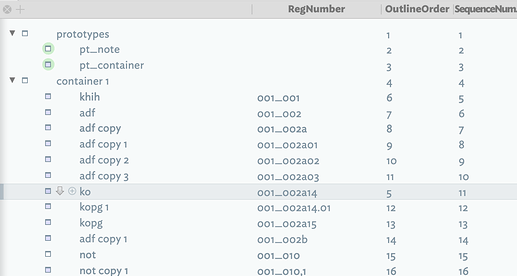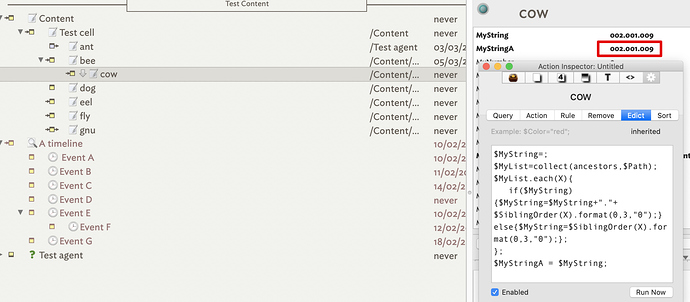I have a Tinderbox file which serves as my collection of reading notes. I have modelled it on Luhmann’s infamous Zettelkasten, by which I primarily mean:
a. that there be no pre-conceived hierarchy of topics,
b. that note sequences (folgezettel) could emerge,
c. that I can link notes together.
Of course, Tinderbox allows for all three of these activities perfectly (and the recent addition of ZipLinks makes it easy and quick). TBX also gives me analytic tools that other note-taking software or plain text solutions do not.
However, I must be able to export my collection into the Finder. This allows me to sync them via iCloud and access them in apps like 1Writer, and to make sure that years of notes are not locked into any one application in the long term.
It is imperative that I be able to keep the order of notes that I have carefully cultivated in TBX intact upon export. As a result, the exported notes cannot merely have descriptive file names: they have to be based upon some kind of sequential numbering system that would preserve the order of notes in TBX. This desire to file new notes within existing note-sequences (Luhmann’s folgezettel) also precludes using the creation date of the note as its title.
My initial solution was simply to follow Luhmann, using his alphanumeric system that allows for interpolating notes as the name of my notes.
There were two problems with this:
-
if I want to change the order of my notes in the TBX Outline, I would have to go back and manually renumber all subsequent notes. This is clearly not feasible, and also takes away one of the main benefits of a collecting one’s notes in Tinderbox: the ability to think through arranging one’s notes into a meaningful order, without breaking all the links to the note.
-
because each note’s name was a mix of numerals and letters, I could not use TBX’s ‘Sort’ feature (for the reasons outlined in another post) to re-order the notes should they get scrambled in TBX. Alphanumeric numbers like 1/10a5 would end up coming before 1/2b, as they are treated as lexical and not numeric units.
The solution which I am now trying is to simply use the TBX System Attribute ‘OutlineOrder’ as the note’s ‘number’. This attribute changes its number automatically depending on the place of the note in the outline. The export of the notes can, of course, be set up to use this OutlineOrder number as the name of the files produced, thus allowing the notes to be sorted correctly in the Finder.
I’m posting this in case it is of use for any others using TBX for similar purposes. However, if anyone sees any potential downsides to this, or has a better solution, please do chime in.

